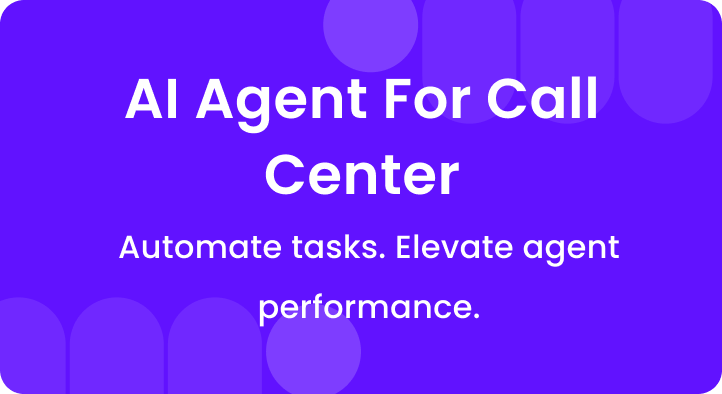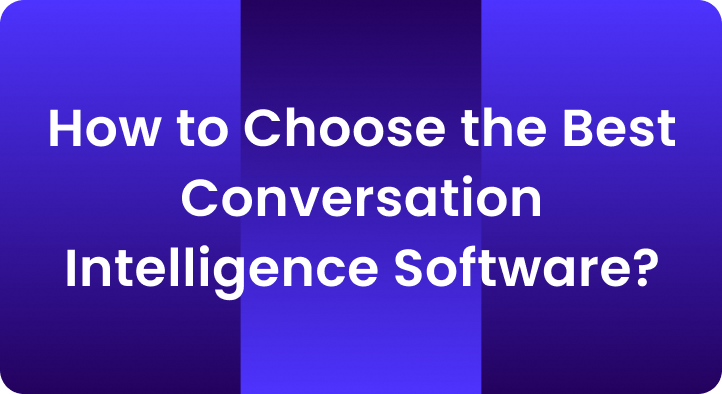You are in a fast-paced world. Your customers expect fast answers and genuine connections.
If you want to expand your market reach and accelerate sales cycles, outbound call centers are an ideal solution.
Outbound call center agents contact prospects, gather feedback, and spark interest.
These calls are also a significant way to show you value your customers by offering real-time assistance and proactive solutions.
With rising competition, it can be challenging to know where to begin.
To help you succeed, this comprehensive guide focuses on proven methods to optimize outbound sales, boost agent productivity, and strengthen customer engagement.
Also, you will find detailed information on technology, metrics, and strategies.
Let’s get started!
A. What is an outbound call center?
An outbound call center consists of customer service or sales agents who reach out to leads and existing customers. Their primary duty is to initiate contact.
Unlike inbound call centers—where calls come in at any time with questions—an outbound call center focuses on proactive engagement. Agents may work with potential buyers, existing clients, or even inactive leads to drive more business.
Here’s the essence:
- You contact the customer or prospect first.
- Conversations can revolve around upselling, cross-selling, product launches, surveys, and more.
- You aim to spark interest, secure appointments, gain feedback, and close sales.
Outbound calls can be friendly touches or direct selling. The goal is to deliver immediate value and build relationships. You solve customer issues or handle their concerns before they even surface. You stay one step ahead, ensuring that your business stands out among competitors.
- Why outbound call centers matter
Outbound calls ensure you meet your customers where they are. They allow you to ask the right questions and gather relevant data.
In a McKinsey survey, 94% of respondents said using multiple channels, including outbound calls, is more effective than older, less-personal models.
With so many options to connect—phone, SMS, or even social media—customers have high expectations. Your outbound call center can meet and surpass them by guiding leads smoothly through the sales pipeline.
B. Types of outbound call center activities
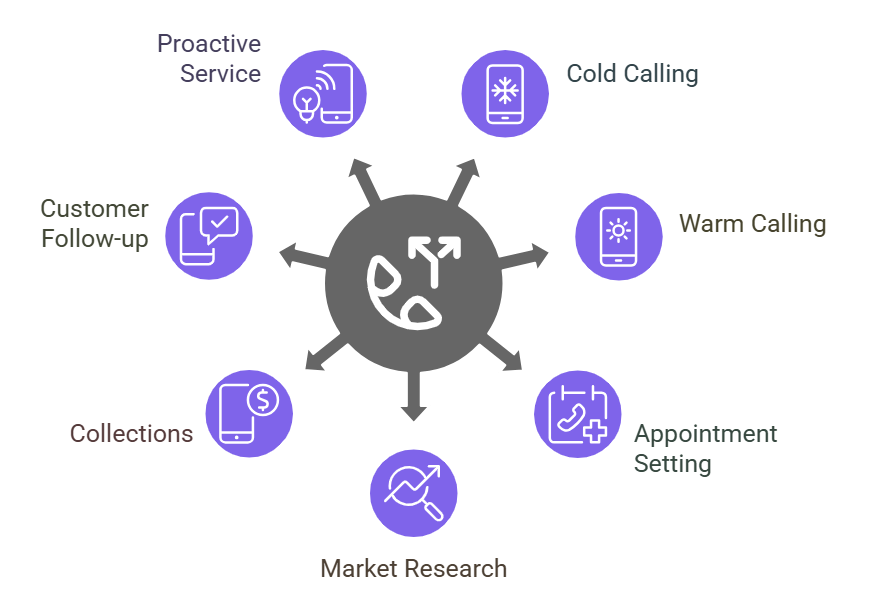
You have many ways to connect with your audience. Let’s explore the key outbound activities:
1. Cold calling
Cold calling involves contacting leads with no prior interaction or interest expressed. These calls aim to find new leads, introduce your products, and see if there is a possible match.
These calls can be tough. People may be wary of unknown callers.
But with an engaging script and a respectful approach, you can see results. Research your audience, outline key talking points, and maintain a helpful tone.
2. Warm calling or lead nurturing
Warm calling is less daunting than cold calling.
You already have a connection with leads—maybe they signed up on your website or attended an event. Your aim is to re-establish contact, share new offers, and gauge interest.
Lead nurturing calls allow you to engage on a personal level. These calls typically see higher conversion rates than cold calls.
3. Appointment setting
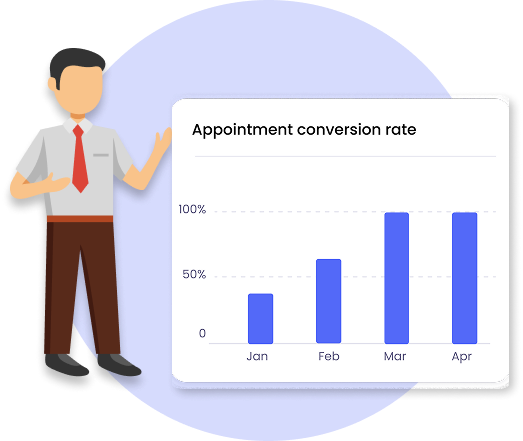
In the appointment setting, your agents schedule meetings for sales reps or set times for demos.
It’s popular in industries like insurance, real estate, and healthcare. Appointment setting is more than just booking times. You work to qualify leads and ensure each conversation is valuable to both parties.
4. Market research and surveys
Sometimes, you don’t call to sell—you call to learn. In these calls, your team gathers data.
They may ask about consumer preferences, usage, or feedback. This feedback then shapes your product roadmap or marketing decisions.
5. Collections and payment reminders
In some outbound call centers, agents remind customers of overdue bills or upcoming payments.
A calm and polite approach can preserve customer relationships. Clear information on available payment options reduces confusion and stress.
6. Customer follow-up
Outbound calls also address follow-up support. Maybe a customer had an issue a month ago.
You contact them to check if everything is now resolved. By taking a proactive approach, you highlight the value you place on long-term satisfaction.
7. Proactive customer service
Similar to follow-ups, but broader in scope.
Proactive customer service calls may center on new product tutorials or explaining changes to policies. They can keep customers in the loop on topics they may not yet be aware of.
C. 9 Outbound call center successful strategies
Are you ready to see real results? These nine proven strategies can boost your outbound call center’s performance.
1. Define clear call objectives
Every call must have a crystal-clear purpose.
Are you qualifying leads? Scheduling a demo? Upselling? Defining objectives keeps agents focused and improves the odds of success.
Document key objectives and share them with the team. Clear objectives lead to coherent conversations and fewer wasted calls.
2. Leverage call center automation
Technology such as predictive dialers or power dialers can significantly reduce idle time.
These tools automatically dial numbers and connect agents only when a live person answers. This maximizes productivity by letting agents concentrate on meaningful interactions.
Automation also ensures data accuracy. It integrates with your CRM for call centers, updating lead or contact info seamlessly.
3. Invest in a solid CRM for call centers
A robust CRM system offers quick access to lead histories, purchase details, and past interactions.
This knowledge helps you personalize calls. This personalization elevates your credibility and fosters trust.
Look for CRM solutions specifically built for call center technology. They often have features such as call recording, call center metrics, or real-time analytics to track progress.
4. Personalize customer engagement
Personalization is huge. Modern customers want tailored experiences.
Start with the basics: use the customer’s name and reference past interactions. Show you already know their story.
This personal connection can be the difference between a quick hang-up and a fruitful conversation.
5. Create helpful call scripts
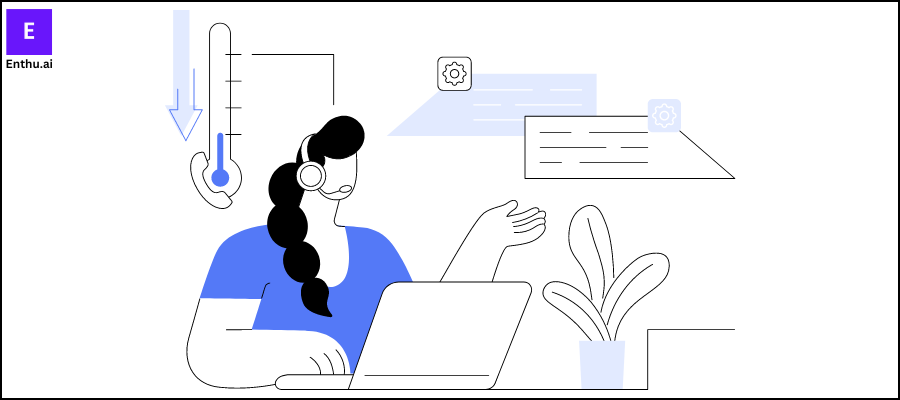
Scripting is a powerful resource. It keeps calls on track, ensures brand consistency, and gives agents a guideline for key talking points.
However, be careful not to sound robotic. Provide your team with flexible scripts that allow them to pivot based on real-time feedback. Including common objections and solutions helps agents handle challenges quickly.
6. Train your team for soft skills
A warm, friendly, and professional tone is crucial to building trust. You want agents who can handle pushback without losing their calm.
Encourage your team to listen carefully and ask questions. Paying attention to the customers’ words fosters empathy and reduces misunderstandings.
Role-playing sessions and ongoing coaching can help your agents gain confidence.
7. Use data to drive results
Outbound calls are not guesswork. They rely on data. Through your CRM, you can see which demographics convert at higher rates or which times of day are best to call.
Analyze these insights. Adjust your approach if data shows that certain segments respond better to specific offers.
Track call center metrics like average handling time, conversion rate, and first call close rate to measure success.
8. Practice speed to lead
Reach prospects quickly, especially if they have shown recent interest.
Calling a lead within five minutes of their inquiry can raise conversion up to 21 times compared to waiting 30 minutes.
Implementing call center automation ensures your warm leads receive immediate calls. This speed gives you a competitive edge.
9. Maintain compliance and respect
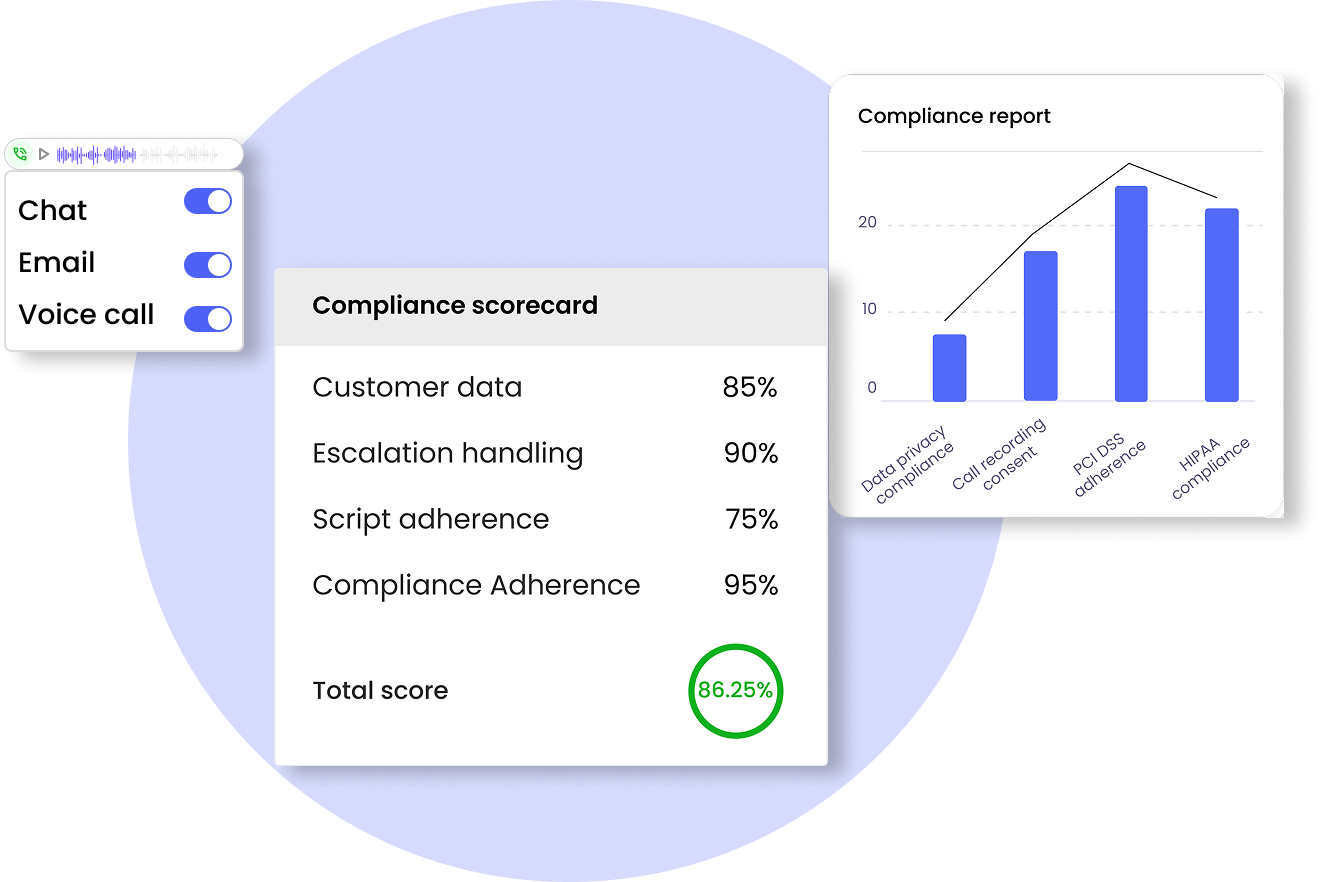
Always check do-not-call lists and follow guidelines like the Telephone Consumer Protection Act (TCPA).
Agents should respect the time and privacy of everyone they call. Quick disclaimers about the reason for calling and a friendly tone can lower rejections.
D. Benefits of outbound call centers for today’s businesses
Investing in an outbound call center can deliver a range of benefits. Here are some of the biggest advantages:
1. Greater sales and lead generation
Outbound call centers actively build new relationships. Agents reach fresh leads, re-engage dormant ones, and even upsell to current clients.
This steady engagement feeds a healthier sales pipeline, all while encouraging faster revenue growth.
2. Better customer engagement
Proactively reaching out to clients builds strong relationships. In one study, 9 in 10 customers said they prefer companies that offer omnichannel service.
By connecting through calls, texts, or emails, you reinforce that you care about them. Regular outreach fosters loyalty and boosts retention.
3. Increased efficiency
Tools like predictive dialers reduce wasted time on bad numbers or unanswered calls. By focusing on live contacts, you can make every minute matter.
At scale, the efficiency gained translates to more calls made, better lead coverage, and higher agent morale.
4. Valuable market insights
Outbound calls provide direct feedback from the market. Customers might share reasons for rejecting an offer or mention features they wish to see.
These insights can guide product development or marketing campaigns. You end up aligning your offerings more closely with evolving market needs.
5. Stronger brand image
An organized, respectful outbound call center can strengthen your brand’s reputation.
Customers remember a pleasant conversation and share it with friends or family. Gradually, it leads to a better public perception of your products or services.
7. Flexibility and scalability
You can scale up or down depending on campaign goals. Outbound call centers often have flexible staffing options, especially when you outsource.
This modularity allows you to handle peak seasons or scale back during slower times, keeping your overhead in check.
E. What are the common challenges in outbound call centers and how to overcome them?
No system is perfect. When you handle outbound calls, you will face hurdles. Here are some of the top challenges—and tips to resolve them:
1. High rejection rates
Frequent “no” responses can discourage agents, lowering morale and confidence. Many rejections occur because the pitch feels irrelevant or too pushy.
Train agents on calm objection handling, highlight genuine benefits, and use dynamic scripts or demos to increase acceptance.
2. Low answer rates
Many calls go ignored when recipients don’t recognize the caller or number. Prospects are wary of unknown or long-distance IDs, leading to fewer pick-ups.
Use local caller IDs, vary call times, and leverage metrics to reach people during ideal hours.
3. Regulatory compliance
Rules like TCPA impose strict calling guidelines, and non-compliance can result in hefty fines. Agents must track do-not-call lists and carefully obtain consent.
Implement compliance software, train on privacy rules, and always validate numbers against official DNC registries.
4. Agent burnout

Handling large call volumes is exhausting, causing stress and turnover. Continuous rejection or lack of variety can further lower morale and productivity.
Provide breaks, recognition, balanced workloads, and coaching to keep your team refreshed and motivated.
5. Lack of accurate data
Outdated or wrong contact details waste agent effort and reduce conversions. Inconsistent databases confuse messaging and prevent effective follow-ups.
Frequently refreshes records and integrates a CRM for real-time data synchronization, ensuring every call is well-informed.
6. Difficulty in measuring results
Vague metrics make it hard to tell if outreach efforts are effective. Without real-time analytics, you miss chances to optimize agent performance.
Define clear KPIs, use dashboards to track progress, and refine strategies continually based on data insights.
7. Technology gaps
Outdated tools and disjointed platforms slow call processes and frustrate agents. Missing features like advanced dialers or analytics hamper efficiency and scaling.
Invest in unified, up-to-date call center software—merging dialers, CRM, and analytics—to streamline operations and boost productivity.
F. Technology and tools for outbound call center
Modern call center software can transform how you engage with leads and customers. Below are the tools you should consider:
1. Predictive and power dialers
- Predictive Dialers: Predictive dialers dial multiple numbers at once and connect agents only to answered calls. This saves time but runs the risk of connecting customers to silent lines if no agent is free.
- Power Dialers: Power dialers call one number at a time for each agent. Once the current call ends, it moves to the next. This ensures there are fewer dropped calls.
Both help streamline your dialing process. They reduce downtime, raise agent productivity, and maximize your outbound sales calls.
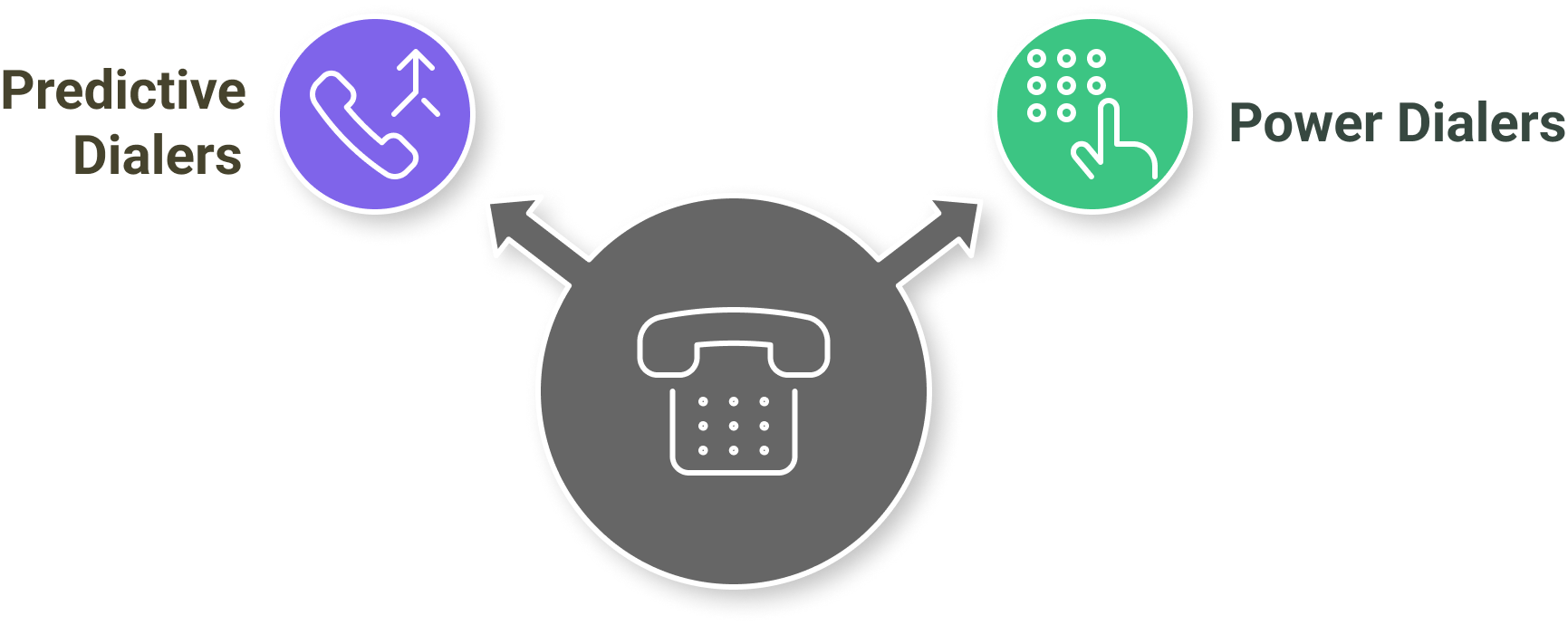
2. CRM integration
A CRM for call centers is a key source of data. You see interaction history, lead scores, or prior purchases. Seamless CRM integration with your dialer or contact center platform speeds up tasks.
Agents have access to relevant info right on their screens. They tailor each call to the customer’s background or immediate need.
3. Call scripting and real-time guidance
Scripts offer structure to calls, ensuring consistent brand messaging. Some solutions provide real-time guidance.
They analyze ongoing calls and present suggested responses. This helps you maintain high-quality conversations with minimal training time.
4. Call recording and speech analytics
By recording calls, you can later review them for quality control or agent training. Speech analytics tools go beyond that.
They spot keywords or sentiments, evaluating if the call meets your performance benchmarks. They also surface patterns in rejections or common complaints.
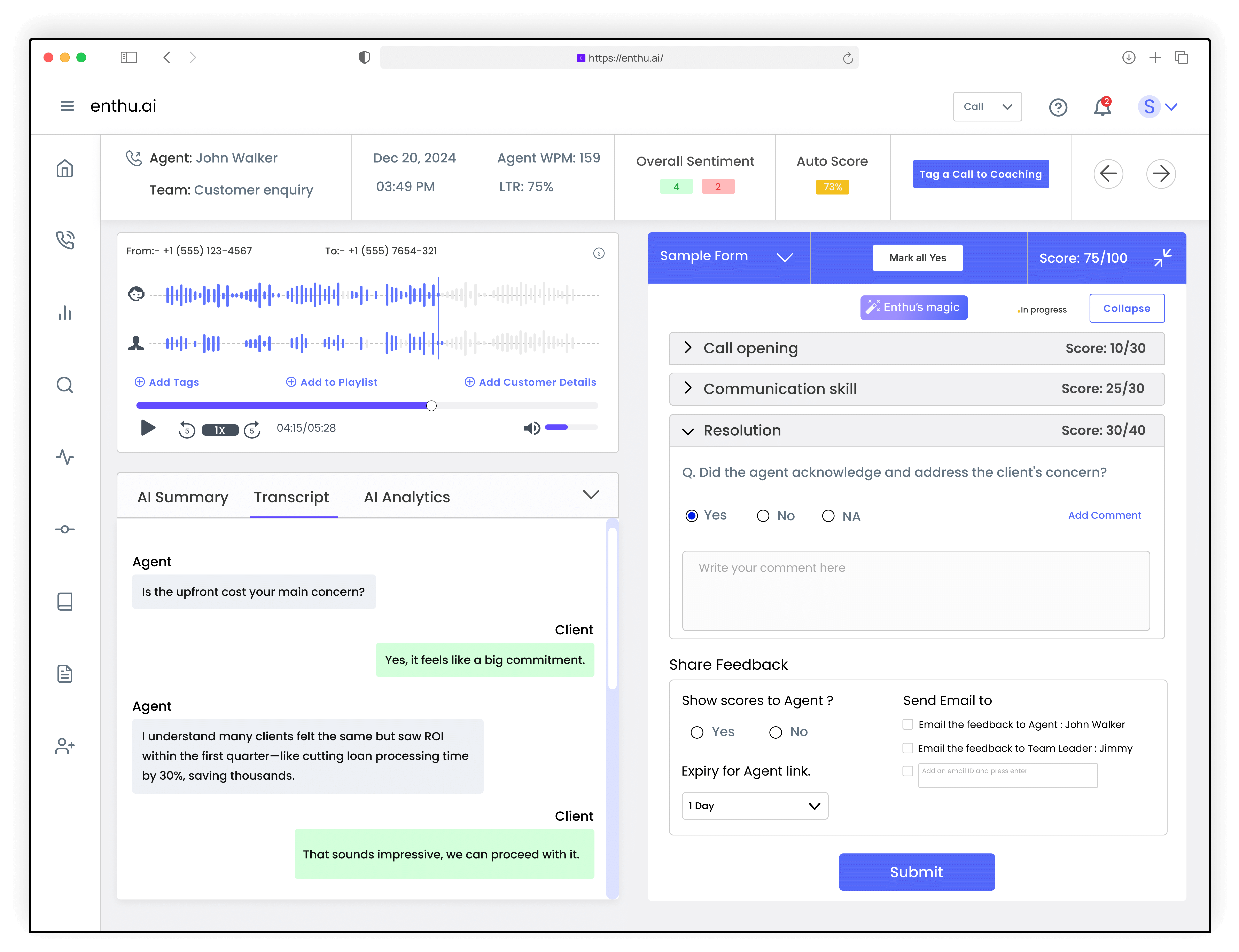 5. Omnichannel communication
5. Omnichannel communication
You do not have to stick to just phone calls. Modern contact center tools handle multiple channels—like email, SMS, or social media.
Give your customers the flexibility to engage in the way they prefer. Keeping everything in one platform reduces data silos and ensures consistent follow-ups.
6. Workforce management
Scheduling your agents fairly and optimizing hours is essential.
Workforce management software can predict call volumes, plan agent schedules, and track adherence. This leads to better resource use and happier employees.
7. Cloud-based platforms
Cloud-based systems let your team work from anywhere with an internet connection.
You gain quick scalability, easy updates, and often lower costs compared to on-premises solutions. You also get real-time analytics no matter where you are.
G. Take your customer relationships to new levels with enthu.ai
Imagine a world where you can see agent performance, customer insights, and coaching opportunities all in one place. That is the power of Enthu.AI, a cloud solution leading provider that simplifies outbound and inbound call center operations under a single integrated platform.
With Enthu.AI, your organization can track every call, highlighting important feedback without manually scouring recordings. This frees your management team to focus on strategic improvements. You can also:
- Serve customers better: With features like real-time agent performance monitoring and speech analytics, your team is fully equipped to address concerns quickly.
- Empower agents: Quality assurance tools, agent coaching, and AI-driven prompts help agents refine their skills. They gain the insights they need to connect with customers in a more meaningful way.
- Utilize real-time data: Enthu.AI serves up advanced dashboards. You see contact rates, call abandonment, conversions, or average handling time. Fine-tune your strategies with live data at your fingertips.
- Scale without stress: A cloud-based solution means there is no heavy infrastructure or complex setup. You can easily scale as your business grows or your campaigns expand.
With Enthu.AI, your outbound call center is no longer about repetitive calls. It’s about creating a better future for your business, agents, and of course, your customers.
Conclusion
Your outbound call center can be a catalyst for growth, bridging the gap between your brand and the marketplace.
By calling or messaging leads, you create a direct channel for feedback, problem-solving, and rapport-building. Adopting smart strategies—such as setting clear objectives, leveraging robust technology, and personalizing every outreach—positions you for success.
Focus on nurturing a skilled team with flexible scripts, a supportive environment, and cutting-edge tools like predictive dialers and integrated CRMs. Constantly monitor your call center metrics to see what’s working and adjust your approach as needed.
Over time, your outbound call center will not only drive sales but also build loyalty, ensuring that confident agents inspire equally responsive leads.



 On this page
On this page